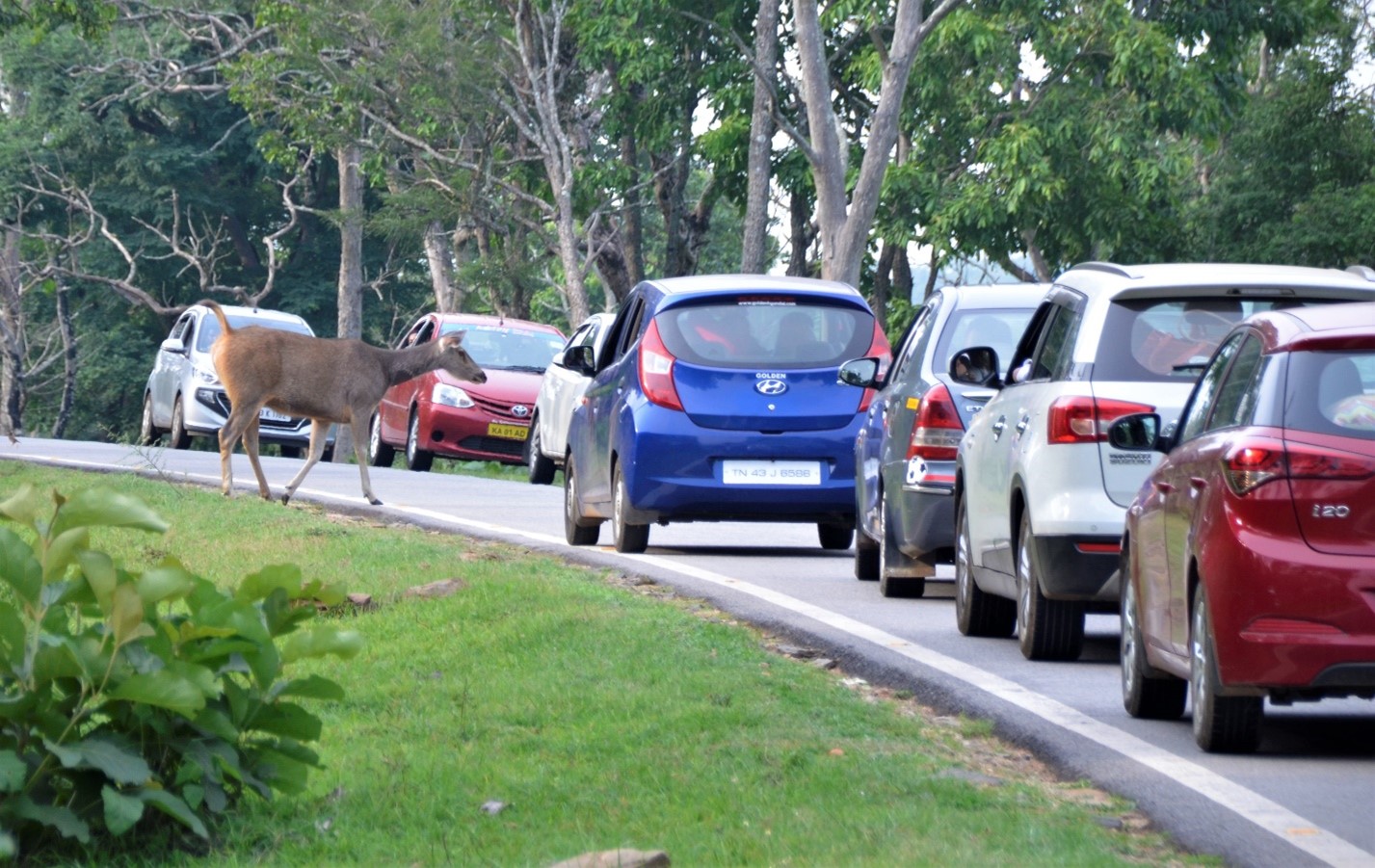30 Jun, 2023
Authors: Mira Amtmann, Advisor (IGBP), Roshan Puranik, Project Advisor, S. Tanbir Azmi, Communication Specialist (IGBP) and Vimarsh Sharma, Project Advisor
 Human-Wildlife Conflict Mitigation through Harmonious Co-existence | ©GIZIndia
Human-Wildlife Conflict Mitigation through Harmonious Co-existence | ©GIZIndia
The Human-Wildlife Conflict Mitigation (HWC) project was successfully concluded on 30 June 2023, marking the end of a remarkable journey dedicated to mitigating human-wildlife conflict and preserving biodiversity.
The project embraced the belief that maintaining a harmonious coexistence is key to protecting our natural resources while adhering to modern wildlife conservation principles. It was implemented in Madikeri and Virajpet Divisions in Kodagu Forest Circle (Karnataka), Rajaji-Haridwar landscape (Uttarakhand), and the enchanting surroundings of Gorumara Wildlife Division (West Bengal).
With a visionary approach, the HWC Mitigation project addressed the multifaceted dimensions of human-wildlife conflict. Its strength laid in promoting the use of the thematic triangle of driver-prevention-damage for HWC Mitigation. By targeting the root causes of conflict, the project deployed an array of macro planning tools, framework guidelines, knowledge posters as well as Implementer’s Toolkits. These valuable resources were designed to empower and guide decision-makers and stakeholders, equipping them with the knowledge needed to safeguard humans and animals alike.
Notable achievements of the HWC Mitigation project include the development of India's National Human-Wildlife Conflict Mitigation Strategy and Action Plan (HWC-NAP) along with three State level Human-Wildlife Conflict Mitigation Strategy and Action Plans (HWC-SAP) for Karnataka, Uttarakhand and West Bengal, a testament to the power of collaboration and shared vision. Fourteen national guidelines were also developed, focusing on ten key species-in-conflict, and four cross-cutting issues. 16 posters on key species-in-conflict Habitat and Behavior along with Do’s and Don'ts in four languages were also developed to raise awareness among the local community to prevent accidental encounters between humans and wildlife.
Additionally, the project has facilitated the development and pilot testing of a web-based National Knowledge and Data Portal on HWC Mitigation to facilitate dialogue and knowledge exchange between scientists, managers, and policy experts from key relevant sectors, youth and community members, via web-based forums. This web platform also anchors the National HWC Mitigation Database and Monitoring system to consolidate information on the indicators for reporting progress on HWC-NAP, thus facilitating the effective monitoring of HWC Mitigation at the national, state and division levels. Furthermore, six HWC Mitigation measures were identified and implemented in Karnataka, Uttarakhand, and West Bengal, encompassing early warning systems, training programs, awareness campaigns, cross-sector cooperation, and the formulation of division-level Human-Wildlife Conflict Management Action Plans (HWC-MAPs). 11 competency-based curricula were also developed and pilot-tested for various stakeholders.
The project supported the integration of the One Health approach into all documents developed under the project such as national and state-level HWC Mitigation Strategy and Action Plans. Training emphasizing One Health for professionals and Panchayat members were also organized.
As the HWC Mitigation project comes to an end, the valuable lessons, tools, and partnerships will continue to shape future endeavours in safeguarding both human and wildlife well-being. Together, we can create a world where humans and wildlife dance hand in paw, celebrating the symphony of life that surrounds us.
Link to resources:
We would like to hear from you. Write to us by clicking on the feedback button on top.
© 2014 IGBP. All Rights Reserved.
Site By: Virtualpages
